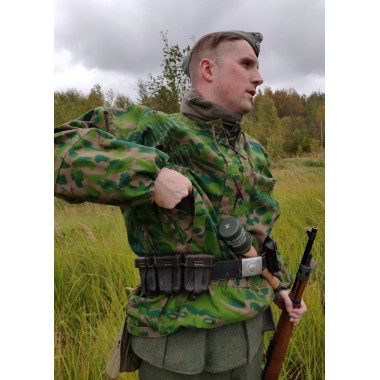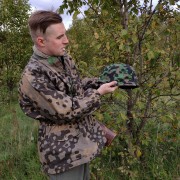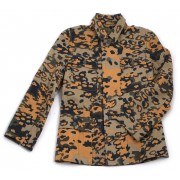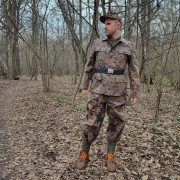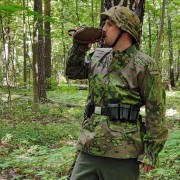How to choose the size?
In the photo: size L smock on the model 179 cm tall, breast volume 101 cm, Russian clothing size 50-52.
In general, you need to take a smock the same size as your jacket. But before that, it is better to measure your chest and understand your size. If you choose the size according to the principle “well, I wear L”, then you can be mistaken, because L is a conditional size, which means simply “large”.
• Chest girth - the recommended girth of a bare chest for a given size; it is necessary to measure with a flexible meter or rope with armpits; pumped men need to remember that a developed chest at the girth may be more than the recommended girth (average), but a larger size will have longer sleeves!
• Breast width - hereinafter measurements are taken on a smock lying flat on the floor; the smock has a straight cut, so the width of the chest = the width of the skirt (bottom); the width of the chest can be measured along the bottom of the smock;
• Minimum waist - waist of the smock along the elastic band;
• Back lenght - from the neck to the elastic (to the waist);
• Sleeves (between cuffs) - the distance between the right and left cuff (rubber bands on the wrists).
| International size | Russian size | Chest girth, cm | Breast width, cm | Minimum waist, cm | Back lenght, cm | Sleeves (between cuffs), cm |
| S | 48 | 96 | 75 | 42 | 50 | 176 |
| M | 50 | 100 | 78 | 44 | 52 | 178 |
| L | 52 | 104 | 81 | 46 | 54 | 180 |
| XL | 54 | 108 | 84 | 48 | 56 | 182 |
| 2XL | 56 | 112 | 87 | 50 | 58 | 184 |
| 3XL | 58 | 116 | 90 | 52 | 60 | 186 |
If you do not understand the table and you need help, write or call us, we will help you to find the size.
You can choose the size you need from those in the list near "Add to Cart" button. If we don't have any size, you won't find it there. Other sizes may appear later.
Description
Read about the history of this garment and its variants on the tab "Historical reference".
Nice copy of model 1938 smock/blouse (also called 1st model). The smock is completely invertible, two-sided (green shades for summer on one side and brown shades for autumn on the other).
Smock have a flap covering lace on the chest. The neck was usually tightened with an elastic band, just like the cuffs; this copy does not have a rubber band on the collar. Vertical slits on the chest are for access to the pockets of the uniform and also have flaps. The tips of the sleeves, which should mask the hands, are usually tucked under the elastic. Usually, a smock skirt was tucked under the belt in order to have a smart look.
Historical reference.
Camouflage "Palmtree" (Palmenmuster) was the first SS camouflage, printed using a roller, not stencils, and was produced from 1940 to 1942.
Camouflage colors differed significantly from batch to batch. These blouses were created at the dawn of printing camouflage on fabric, so each batch was essentially an experiment: slightly different dyes, fabric composition, dyeing conditions... Our color blouse matches the color presented in Lorenzo Silvestri's book "Waffen-SS camouflage uniforms" on page 142-146, which until 1943 was at the disposal of the LSSAH division. Scan from the book below:
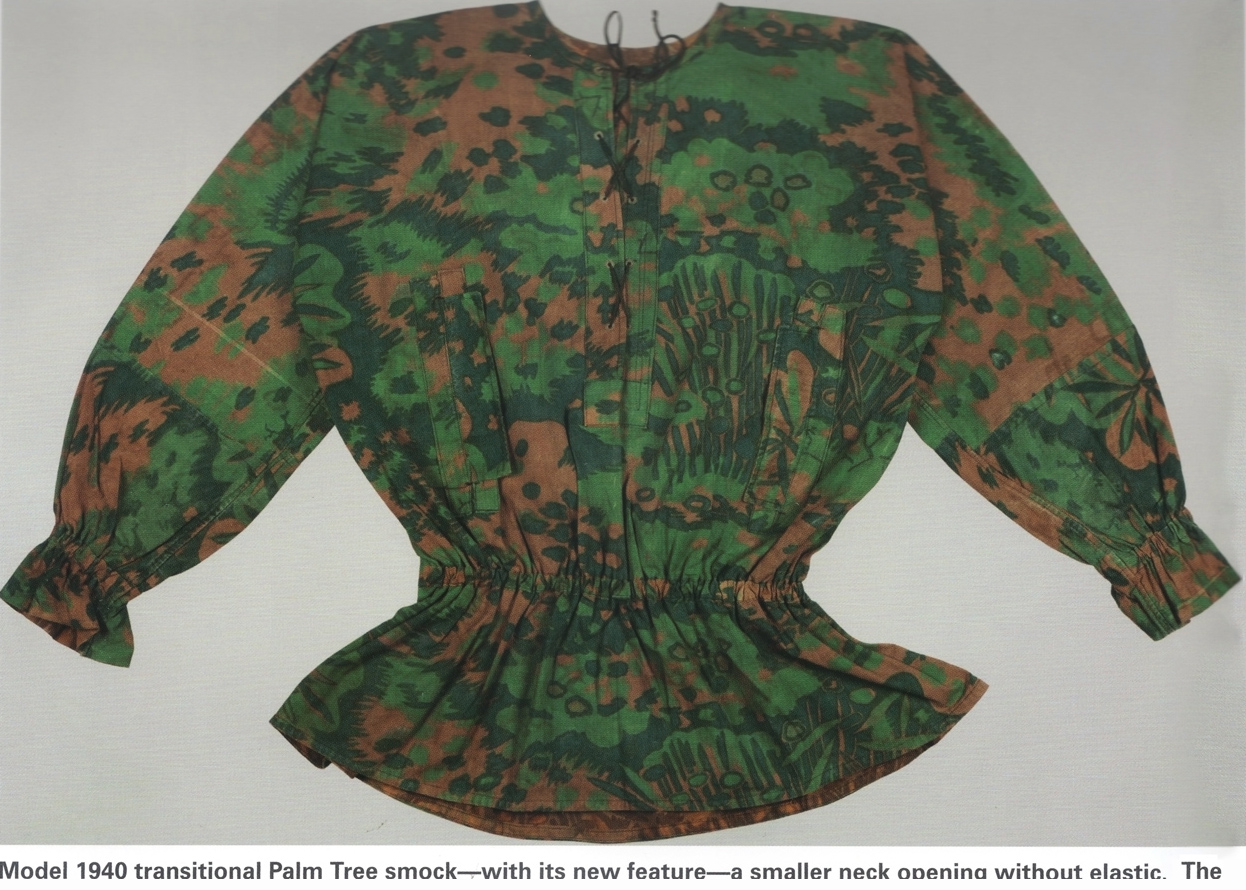
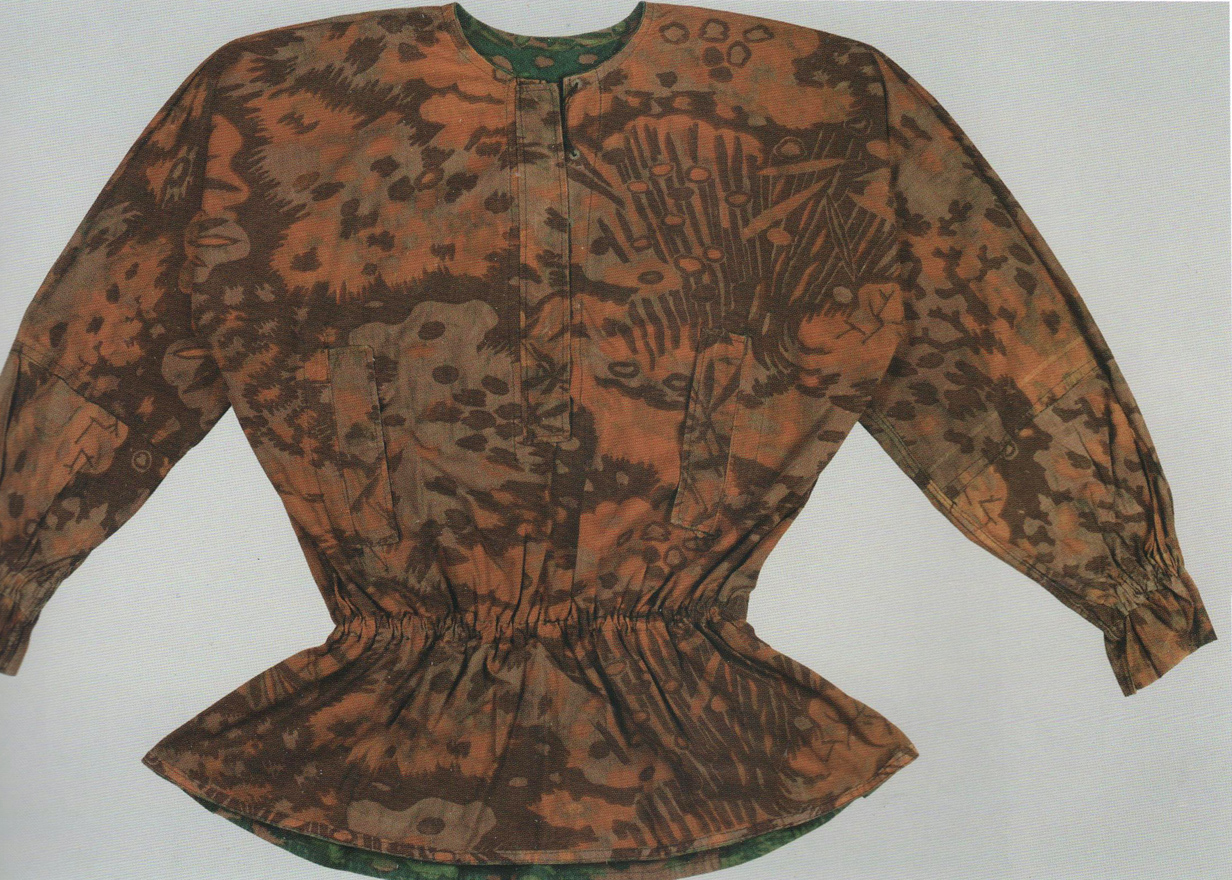
Photo of the original blouse from the book of Lorenzo Silvestri "Waffen-SS camouflage uniforms".
Camouflage "Palmtree" has nothing to do with the German Afrika Korps (Deutsche Afrika Korps, DAK)!!! The camouflage was named so due to the characteristic shape of the spots, it was not designed for use in Africa.
A double-sided camouflage blouse was tested in 1938 by soldiers of the Deutschland regiment, until that time the SS soldier's camouflage consisted of a raincoat, a helmet cover and a mesh on the face. And until June 1940, 32,400 blouses were produced. Most of these blouses came to Russia and were lost there. Therefore, the original of such a blouse (in excellent condition) among collectors is currently estimated at > 10.000 dollar. Prices are rising.
The blouse is worn over the uniform. Sometimes in hot climates, SS units wore such blouses directly on a naked body without a tunic.
Historical information taken from books: Michael D. Beaver, Camouflage uniforms of the Waffen-SS and Robert Kurtz, Afrikakorps.










